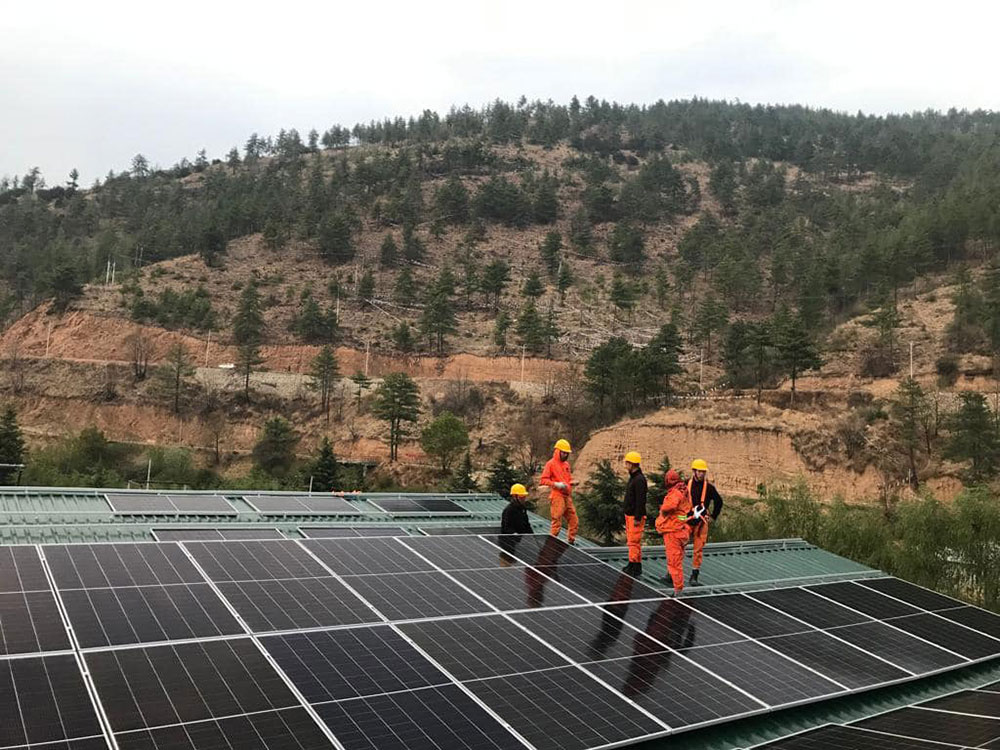Yangyel Lhaden
To diversify energy and complement hydropower energy with alternative renewable energy, the Department of Energy (DoE) has identified around 266 government buildings to install eight megawatt-peak (MWp) rooftop grid-tied solar panels.
The project is funded under the Asian Development Bank sub-project one.
Under the same project, the DoE is also currently studying the feasibility of scaling up distributed rooftop solar projects of more than 50 MWp across public institutions in the country.
The project is expected to reduce dependency on hydropower for energy, as the share of alternative renewable energy in total energy consumption remains below one percent, according to the Bhutan Energy Data Directory (BEDD) 2022.
The country’s main energy source, hydropower, depends on the run-off-water scheme While the country exports electricity to India during the summer, it imports electricity at a higher cost during lean seasons.
In the six months from December 2023 to May 13, 2024, the country imported electricity worth Nu 6.07 billion, an increase from the same period the previous year, when it imported electricity worth Nu 1.75 billion.
Moreover, the country’s hydroelectricity export has been decreasing over the years. In 2021, Bhutan exported electricity worth Nu 24.2 billion. It decreased to Nu 22.47 billion in 2022. Last year, the export further decreased to Nu 16.67 billion.
A demonstration project of 11.7-kilowatt (kW) solar panels installed on the campus of the Ministry of Energy and Natural Resources (MoENR), which supplies energy to a building, has demonstrated the immense potential of solar energy in complementing hydropower.
The energy generated from solar panels on the campus is fed into the national grid so that solar and hydropower energy can complement each other when one source is in short supply.
Since its installation in 2021 until May 26 of last year, it has generated 19,753 kW-hours (kwH) of energy.
On average the solar panels have generated 897.8 units of energy in a month which is enough to power eight rural residential consumers, 10 highlander consumers, and three urban consumers in a month, considering the average monthly energy consumption per consumer data from Bhutan Power Corporation (BPC).
According to BPC data, 128,111 rural residential consumers consume on average 104.9 units of energy, 1,478 highlander consumers use 91.34 units, and 62,145 urban consumers use 244.2 units of energy in a month.
Taking into account the tariff rate set by BPC, the MoENR office had the potential to save Nu 79,583 over a span of twenty-two months by using solar panels.
The energy department is also working on to provide solar system to 304 households in three districts of Dagana, Lhuntse, and Pemagatshel.
“Currently, the contractor is in process of designing the solar system for the project,” an energy department official said.
This project worth USD three million is part of the Alternative Renewable Energy Pilot Project, funded by the Japan Fund for Prosperous and Resilient Asia and the Pacific, which is being administered by the Asian Development Bank.
“ In the second phase of the project we are planning to explore additional 200 solar systems under prosumer initiative,” the official said.
Prosumer refers to policies that encourage consumer of electricity to also become producers of electricity. It is a revenue-generation system where the users can sell the surplus electricity as well.
The 304 households, on average, consume 1,004 KwH energy in a year and pay Nu 88 per month and Nu 1,051 per year. The three Kw solar system is expected to generate 3925.63 KwH in a year. The rural households get 100 units of electricity free.


